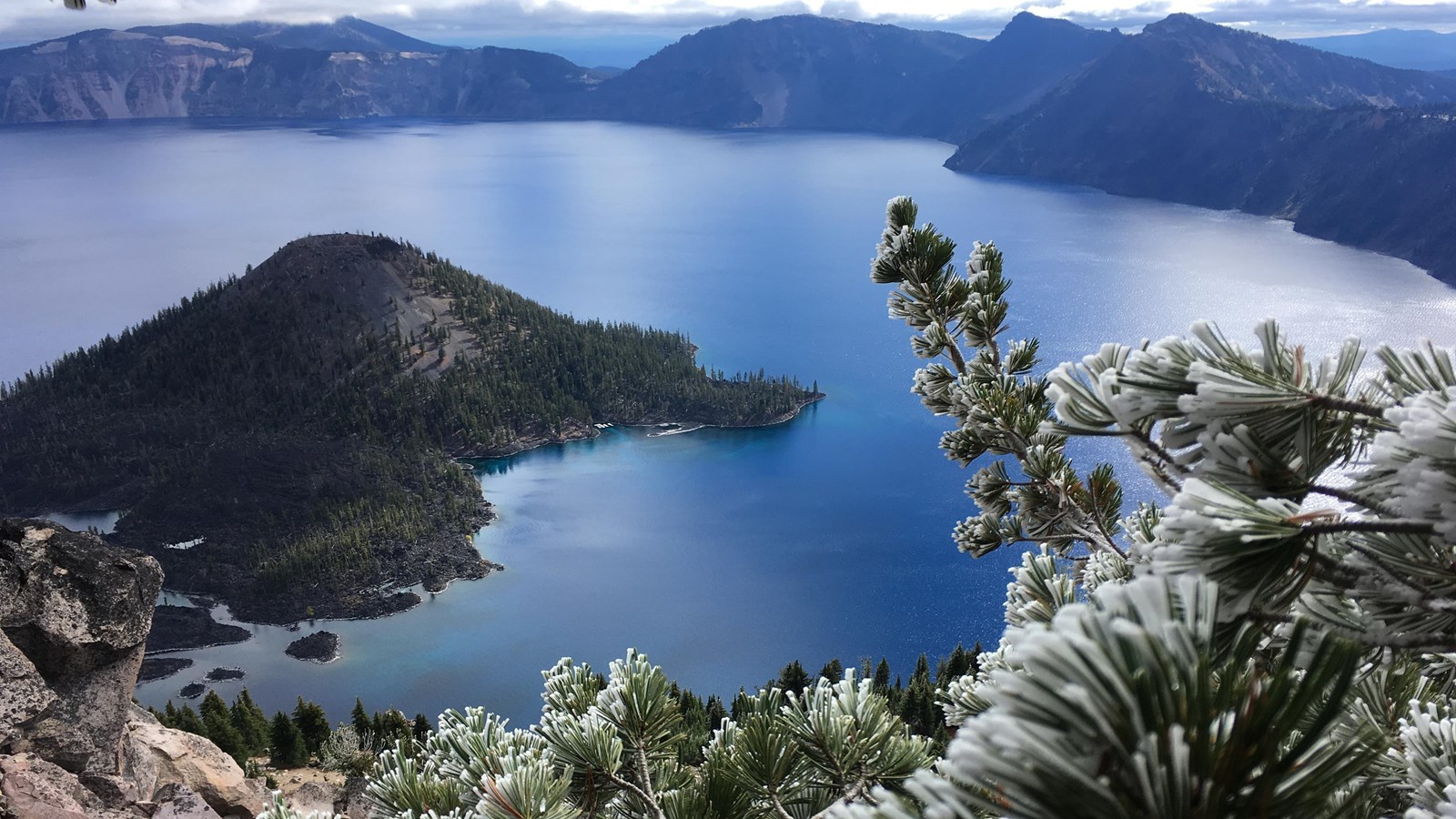Last updated: April 19, 2021
Place
Crater Lake

NPS Photo/Greg Shiffer
Information Kiosk/Bulletin Board, Scenic View/Photo Spot, Toilet - Vault/Composting
Crater Lake, at 1,943 feet (592 meters) deep, is one of the deepest lakes in the world and the deepest in the United States. The lake averages more than five miles (8 km) in diameter, and is surrounded by steep rock walls that rise up to 2000 feet (600 meters) above the lake's surface.
From a Mountain to a Lake
Crater Lake is located in Southern Oregon on the crest of the Cascade Mountain range, 100 miles (160 km) east of the Pacific Ocean. It lies inside a caldera, or volcanic basin, created when the 12,000 foot (3,660 meter) high Mount Mazama collapsed 7,700 years ago following a large eruption.
An average 67 inches of precipitation, rain and melted snow (annual average of 42 feet of snowfall (13 meters)) supply the lake with water. There are no inlets or outlets to the lake. The lake level fluctuates slightly from year to year while evaporation and seepage prevent the lake from becoming any deeper.
Deep Blue
Crater Lake's great depth, purity and clarity (avg 103 feet deep), and the way sun light interacts with water determines the lake's color. Water molecules absorb the longer wavelengths of reds, oranges, yellows, and greens while the shorter blue and purple wavelengths are more easily scattered. The scattered blue light penetrates deeper into the clear water then is redirected back up to the surface where we can see it. Around the edges where the water is less deep, some of the unabsorbed green sunlight is reflected back up. The color of the lake can vary from day to day depending on wind, cloud cover, and the angle of the sun
Wizard Island Plus Three
Following the collapse of Mount Mazama, lava poured into the caldera even as the lake began to rise. Today, a small volcanic island, Wizard Island, appears on the west side of the lake. This cinder cone rises 767 feet (234 meters) above the lake. At its summit is a small crater, 300 feet (90 meters) across and 90 feet (27 meters) deep.
Out of sight and underwater are three more volcanoes that grew while the lake was filling. The Rhyodacite Dome is the youngest of these and occurred about 5000 years ago.
Life in the Lake
Between 1888 and 1942, five species of fish were introduced into Crater Lake. About 60-thousand rainbow trout and kokanee salmon continue to thrive. Scientist have identified over 165 species of phytoplankton and zooplankton, along with invertebrates that live throughout the lake. Amphibians, including the native Mazama newt, exist in shallow areas but are in danger due to the introduction crayfish, a predator.
Large colonies of a native moss circle the lake at depths between 100 feet (30 meters) to 400 feet (120 meters).
